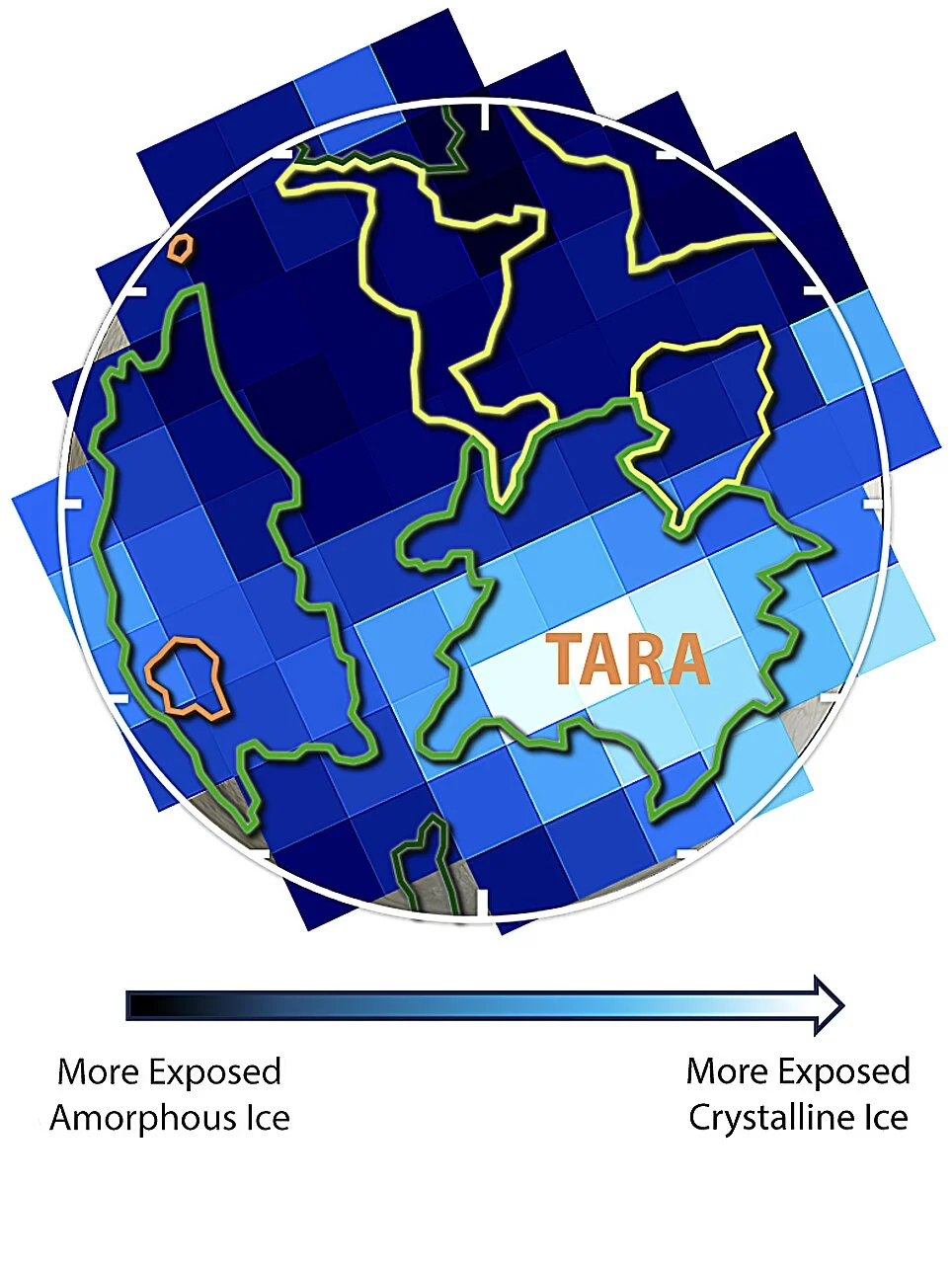
Europa’s Icy Surface: A Dynamic World Revealed by JWST and Groundbreaking Experiments
Jupiter's moon Europa is proving to be a far more dynamic and complex world than previously imagined. Recent findings from the James Webb Space Telescope (JWST), coupled with innovative laboratory experiments, are reshaping our understanding of Europa's icy surface and hinting at a potentially habitable ocean beneath.

A team led by Dr. Ujjwal Raut at the Southwest Research Institute (SwRI) conducted experiments that support the spectral data gathered by JWST. The data indicates that the ice on Europa's surface is constantly changing, with varying crystallization rates in different areas, notably the Tara Regio. This area exhibits crystalline ice both on the surface and at depths, suggesting a complex interplay of external processes and internal geological activity.
"We think that the surface is fairly porous and warm enough in some areas to allow the ice to recrystallize rapidly," explained Dr. Richard Cartwright from Johns Hopkins University's Applied Physics Laboratory. He further notes, "Also, in this same region, generally referred to as a chaos region, we see a lot of other unusual things, including the best evidence for sodium chloride, like table salt, probably originating from its interior ocean. We also see some of the strongest evidence for CO2 and hydrogen peroxide on Europa. The chemistry in this location is really strange and exciting."
The nature of water ice on Europa plays a crucial role. On Earth, crystalline ice forms when water molecules arrange hexagonally during freezing. However, Europa's surface ice is constantly bombarded by charged particles, disrupting this crystalline structure and creating amorphous ice.
Raut's experiments were instrumental in determining the timescales for amorphization and recrystallization of ice on Europa, especially within its chaos terrains. The convergence of JWST data and these experiments strengthens the evidence for a liquid ocean lurking beneath the icy shell.
Another study focused on the evolution of salty granular ice analogs under Europan surface conditions. Researchers observed significant changes in water absorption bands, indicating that remote-sensing data needs careful interpretation. They also identified a narrow absorption feature linked to hydrohalite, which degrades rapidly under radiation. It suggests that hydrohalite detected would indicate very recent activity (less than 10 years) or unusual thermal conditions.

"Our data showed strong indications that what we are seeing must be sourced from the interior, perhaps from a subsurface ocean nearly 20 miles (30 kilometers) beneath Europa's thick icy shell," Raut stated. The detection of both common and rare isotopes of CO2 further supports this hypothesis, pointing towards an internal ocean as the source.
The evolving understanding of Europa's surface highlights its dynamic nature and the potential for ongoing geological processes. Are these processes contributing to a potentially habitable environment within Europa's subsurface ocean? What secrets will future missions like Europa Clipper reveal?
Share your thoughts and theories in the comments below!